Mozambique: At least seven killed by insurgent attacks in Cabo Delgado
Police claim to be analysing drug trafficking report – Mozambique

Image: VOA
The spokesperson for the General Command of the Mozambican police, Inacio Dina, claimed on Tuesday that the authorities are analysing a report published at the weekend which claims that heroin is Mozambique’s second most important export product.
The report is published by the Department of International Development of the London School of Economic and Political Science (LSE). Its author is visiting senior fellow Joseph Hanlon, a British journalist and expert on Mozambican matters, who has studied the country closely since its independence in 1975. The Portuguese version of the report is distributed by the Mozambican anti-corruption NGO, the Centre for Public Integrity (CIP).
Asked about the report at his Maputo weekly press briefing, Dina said “Naturally, the report needs analysis to verify the basis of its conclusions. Superficially, we must understand that the country’s geographical location, with a lengthy coastline, and long land borders, opens various scenarios”.
He admitted that the geography allows illegal passage through the country, but claimed that the authorities have done their utmost to guarantee security and protection at the borders and along the corridors.
But he effectively admitted that he had not read the report, since he made no mention of its claims of corruption in the police and at the ports. He reduced the report to unexceptional claims about the porosity of Mozambique’s borders.
Asked about the scale of the entry and exit of prohibited goods, he claimed That major work on stopping illicit traffic has been undertaken at Mozambican airports, but that deeper research into the phenomenon is needed.
“In terms of the scale or volume of prohibited goods – or even non-prohibited goods – entering and leaving, a deep analysis is needed”, Dina said. “We have verified the seizure of drugs and other products which are not allowed to pass through the country. There is a great deal of work to be done by the police. The country’s geographical situation continues to challenge the authorities”.
The scale of the heroin trade, according to Hanlon’s research, is enormous. He writes that Mozambique has become “a significant heroin transit centre and the trade has increased to 40 tonnes or more per year, making it a major export which contributes up to 100 million US dollars per year to the local economy”.
Hanlon first wrote about this crime in 2001, in articles that appeared in the independent newsheet “Mediafax”. At the time AIM published an English summary of his findings entitled “Is the economy floating on drug money?”
Despite these well publicised warnings, few measures were taken to halt the trade, and the latest research suggests the problem may have worsened.
The heroin trade is an offshoot of the war in Afghanistan. Hanlon notes that heroin “is produced in Afghanistan and shipped through Pakistan, then moved by sea to east Africa and particularly northern Mozambique. From there it is taken by road to Johannesburg, from where it is sent to Europe”.
“Estimates vary from 10 to 40 tonnes or much more of heroin moving through Mozambique each year”, the report continues. “With an export value of 20 million dollars per tonne, heroin is probably the country’s largest or second largest export (after coal).It is estimated that more than two million dollars per tonne says in Mozambique, as profits, bribes, and payments to senior Mozambicans”.
“Heroin arrives on dhows 20-100 kilometres off the coast”, the report says. “The Mozambican role is to take it from the dhows, move it by small boat to the coast and then by road to warehouses, and finally take it by road to Johannesburg, South Africa”.
“The 10-40 tonnes a year estimate is from dhows only”, it adds, “and further significant amounts of heroin also arrive in containers of other imports, particularly at the northern port of Nacala”.
Although heroin production is on the increase in Afghanistan, “tighter control of transit through eastern Europe is moving the trade to southern routes, and more controls in Kenya and Tanzania has moved sea landings south to northern Mozambique”, Hanlon writes.
Embassies in Maputo, the report adds, were well aware of the illicit trade, but only the United States took measures when, in 2010, the Obama administration, decreed that one of the richest businessmen in Mozambique. Mohamed Bachir Suleiman, who boasted of his close ties with the ruling Frelimo Party, was a “drugs kingpin”. The US Treasury Department described Bachir as “a large scale narcotics trafficker whose network contributes to the growing trend of narcotics trafficking and related money laundering across southern Africa”.
Bachir denied the accusation, and a Mozambican investigation, under the then Attorney-General Augusto Paulino, could not find the evidence needed to mount a case against him (partly because the Americans are reluctant to share their information, doubtless not wanting to blow the cover of their sources).
Hanlon’s report says that in recent years “a new and more modern decentralised structure” for drug trafficking has sprung up, which he regards as comparable to businesses such as Uber and Airbnb, with a myriad of smaller players taking over from centralised drug barons.
“Within Mozambique, the generalised corruption in police and the state apparatus made ordinary bribes to police and others faster and easier than high level political protection”, Hanlon argues. “Smartphones and apps make electronic communication possible”, while good mobile phone coverage across northern Mozambique “makes this a sensible model for the expansion of the heroin trade there”.
“The new model is looser and more flexible, using drivers, fishermen and others for individual pick-ups and deliveries”, the report claims. “People are contracted and paid for specific jobs, and often assigned by mobile phone. Thus a driver or a boat owner may just receive a WhatsApp message telling them to go to a particular point to collect a heroin parcel – just like calling an Uber taxi”.
But the whole operation is still controlled from abroad. Hanlon believes that the key figures are from Dubai, although there may also be Pakistani “controllers”.
ALSO READ: Heroin is Moz 2nd biggest export – By Joseph Hanlon



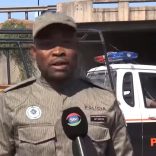
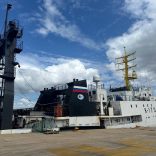
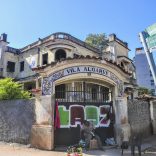


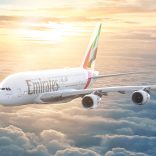
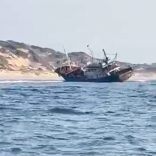
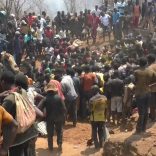


Leave a Reply
Be the First to Comment!
You must be logged in to post a comment.
You must be logged in to post a comment.